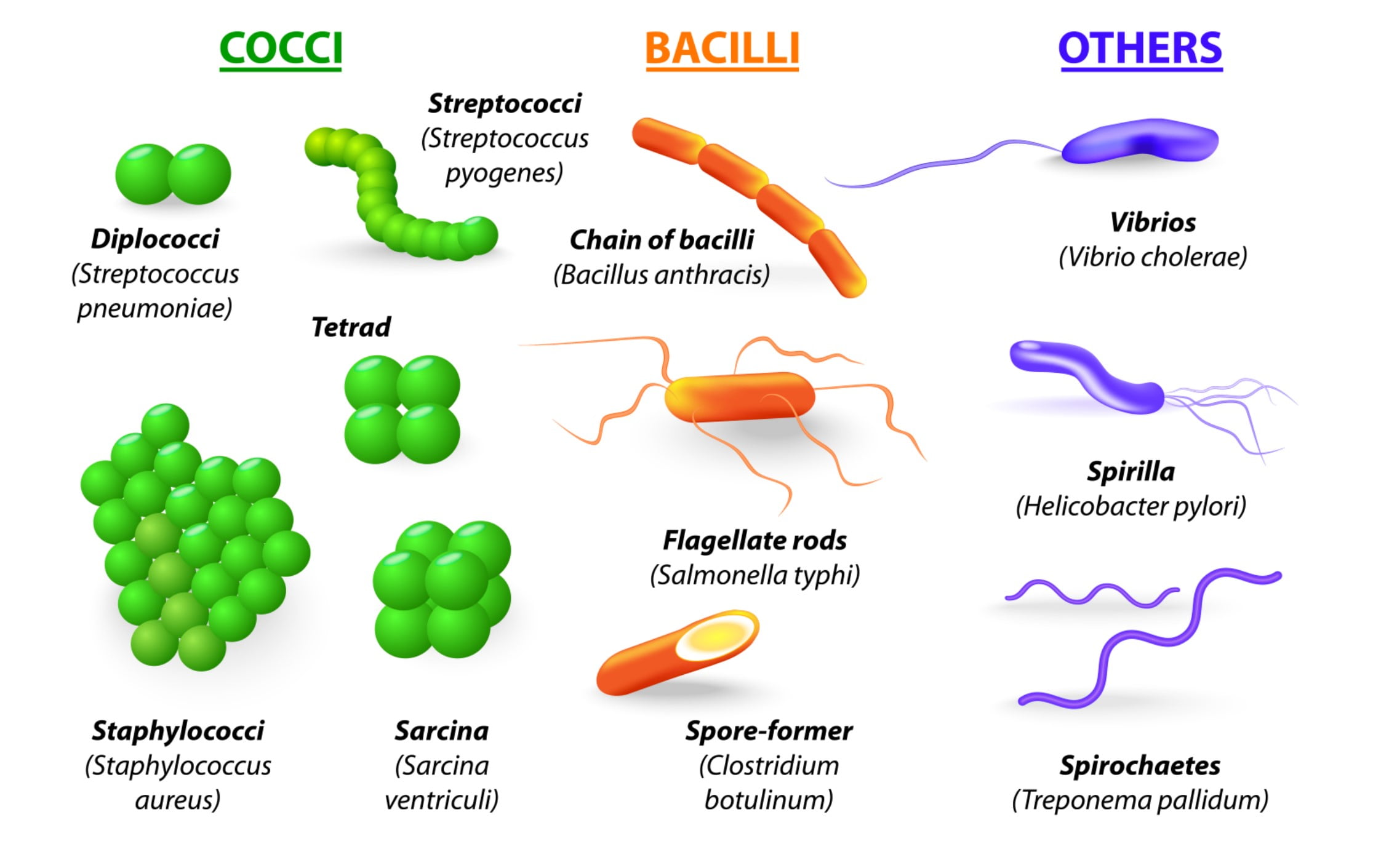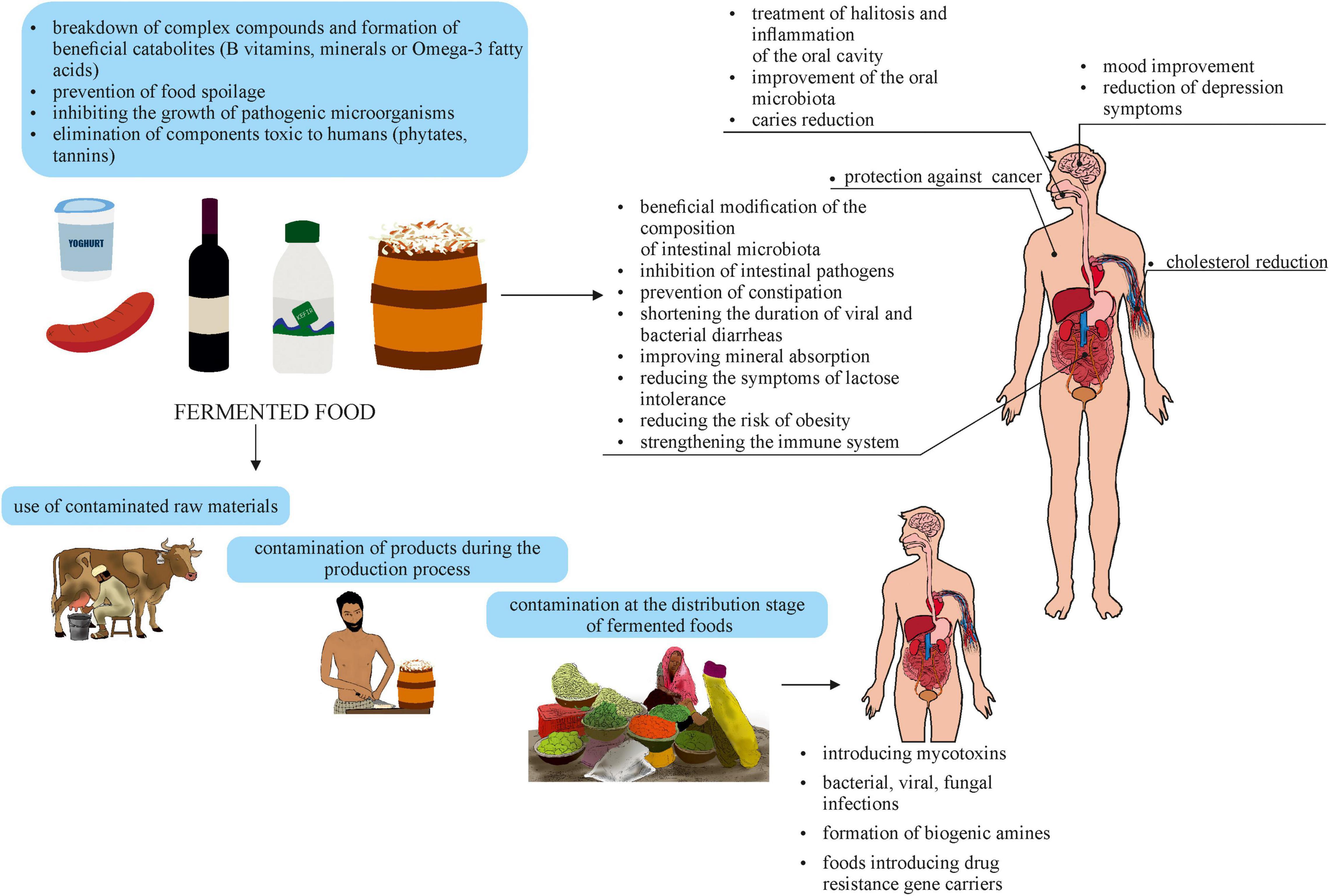Most foodborne illness is caused by bacteria. A food that is fully cooked can become re-contaminated if it touches other raw foods or drippings from raw foods that contain pathogens.

Food Microbiology Pathogenic Bacteria Viruses Yeasts Moulds
Nutrient levels of the Food 2.

. Prompt refrigeration or freezing typically prevents this growth. A food that is fully cooked can become recontaminated if it comes into contact with other raw foods or drippings from raw foods that contain pathogens. Produce can be contaminated from contact with contaminated soil andor water Bacteria naturally grow inside of all produce Butchering and the processing of animal tissues may result in contamination from the animals intestinal bacteria Dairy products such as milk and eggs often.
These single-celled microbes reproduce by splitting in two - often very rapidly. Microbes can be transferred from one food to another by using the same knife cutting board or other utensil without washing the surface or utensil in between uses. Check out a sample QA here.
Food becomes compromised by microbes by leaving food out for a certain amount of time unrefrigerated or by unproper cleaning of the food. In the right conditions of warmth acidity and moisture they can produce millions of cells in a few hours. Want to see the full answer.
Check out a sample QA here. How does food become compromised by microbes. They can survive cooking and will start to grow again in good.
Food can become compromised by microbes via the soil water or from host organisms in their tissue and digestive track. Food becomes compromised by microbes when it is in an environment that allows microbes to flourish. Even though we have utilized micro-organisms for.
Food becomes compromised by microbes when it is in an environment that allows microbes to flourish. Produce is exposed to microbes in the soil and from irrigation water. Materials used Student Supplied 1 Bottle of bleach 1 Bottle of distilled water 1 Camera digital or smartphone 1 Coffee cup 1 Hand soap 1 Isopropyl rubbing alcohol C3H8O 1 Large cooking pot at least 8 deep 1 Leaf lettuce-fresh unwashed 1 Oven mitt 1 Roll of paper towels 2 Small container of milk 1.
Warm temperatures moisture and exposure to oxygen all create ideal environments for microbes to grow. View the full answer Previous question Next question. The Living Fabric 5 The Integumentary System 6 Bones And Skeletal Tissues 7 The Skeleton 8 Joints 9 Muscles And Muscle Tissue 10 The Muscular.
Isolation of the microorganisms in microbiology is the process of developing a pure culture by separating one species of microbe from a mixture of many other species. The Living Units 4 Tissue. Many bacteria need to multiply to a larger number before enough are present.
Select all answers that apply. Food becomes compromised by microbes when it is in an environment that allows microbes to flourish. Food becomes compromised by microbes when it is in an environment that allows microbes to flourish.
Food Storage Many bacterial microbes need to multiply to larger numbers in food in order to cause disease. Expert Answer 100 4 ratings All microbes need to multiple to large number to replicate and produce its own species exist on Earth. This is why we put our food in the refrigerator and sealed bags.
Warm temperatures moisture and exposure to oxygen all create ideal environments for microbes to grow. This problem has been solved. Warm temperatures moisture and exposure to oxygen all create ideal environments for microbes to grow.
The food become compromised by microbes during the collection transport storage and processing of food the microorganism can be added in food through the utensil used for storage and processing of food contaminated air and water improper processing temperature unhygienic conditions in kitchen where food is processed. Food becomes compromised by microbes when it is in an environment that allows microbes to flourish. An Orientation 2 Chemistry Comes Alive 3 Cells.
See the answer How does food become compromised by microbes. 1 The Human Body. The Oxygen demand of the specific pathogen 6amount of available Moisture in the food.
This is why we use refrigeration as a method to control some microbial growth. Microbes have been used in the production of various important foods and beverages which are part of the average human diet for thousands of years. When the exposed produce is not cleaned properly before consumption foodborne illness in humans can occur.
The way that food is handled after it is contaminated can also make a difference in whether or not an outbreak occurs. Want to see the full answer. How can food safety be improved in the home environment.
How does food become compromised by microbes. Under warm and moist conditions for instance slightly contaminated food left out overnight can become highly infectious as the germs multiply. Warm temperatures moisture and exposure to oxygen all create ideal environments for microbes to grow.
This is why we put our food in the refrigerator and sealed bags. Acidity of the food 3. Warm temperatures moisture and exposure to oxygen and this creates a perfect environment for microbes to flourish.
Even though these microbes may not be harmful. This is why we put our food in the refrigerator and sealed bags. Some bacteria form spores which are resistant to drying and heating.
If the number of bacter. - The butchering and processing of animal tissues may result in contamination with microbes that are found in the digestive system of the animal. A pure culture is a culture that contains only one specie.
The Time the food is held at temperatures favorable for pathogenic bacterial growth 5. Students whove seen this question also like. It can also contaminated later in the groceries supply chain in the kitchen or in the cooking process.
Temperature the food is maintained 4. How does food become compromised by microbes.

Overview Of Possible Contamination Routes Of Food With Microbial Download Scientific Diagram

Solved How Does Food Become Compromised By Microbes Select Chegg Com

Frontiers Two Faces Of Fermented Foods The Benefits And Threats Of Its Consumption Microbiology
0 Comments